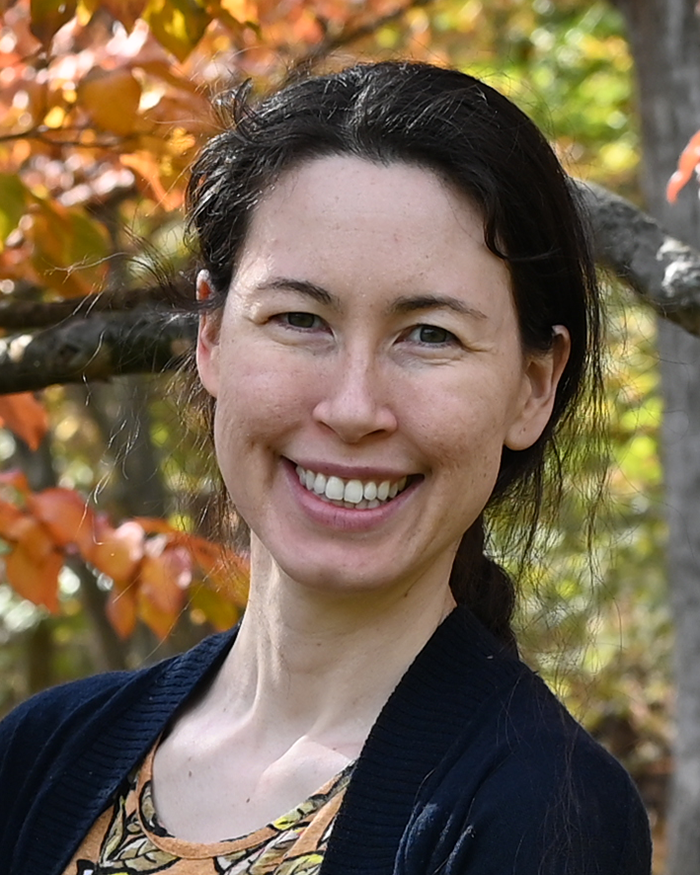
Mayumi Miller, PhD
Mayumi Miller, PhD, studied the early vascular transcriptome of zebrafish as a postdoctoral fellow in Dr. Brant Weinstein’s laboratory from 2013–2019. Now, Dr. Miller has a small lab as a research biologist at the FDA in the Center for Veterinary Medicine.
While at the NIH, Dr. Miller took full advantage of available resources, participating in several training programs and career development courses. She completed the Translational Science Training Program and the Leadership Series and Management Bootcamp through the Office of Intramural Training and Education (OITE). Dr. Miller also attended courses in technology transfer, FDA regulation, food and drug law, and computer programming through the Foundation for the Advanced Education in the Sciences (FAES). Lastly, she received a certificate in “Principles of Clinical Pharmacology” from the Office of Clinical Research Training and Medical Education.
We recently talked with Dr. Miller about her role as a research biologist, securing the position, and what she loves about her job. Read below to learn more about this exciting career opportunity and what it took to get there.
Can you tell us a little about the role of a research biologist at the FDA and what you research now?
A research biologist is similar to the position of a principal investigator (PI) at the NIH. However, the projects in my lab are very much driven by drug and biologics applications that the FDA receives from industry. For example, one of the main focuses of my lab centers on collecting data to determine the safety and efficacy of intentional genomic alterations (CRISPRS, TALENs, etc.) in food and drug producing animals.
How did you find the position, and what was the application/hiring process like to join the FDA?
I found and applied for the position on USAJobs. To put timing into perspective, in the middle of August I received a call from my current supervisor inviting me to interview. About two weeks later, I gave a presentation on my research, was interviewed by a three-person panel, and then met with various people within the office (the panel interview uses the same questions for every candidate, so they were not tailored to me, and I was told this beforehand). The following week, I was asked for references, and I received an informal offer two days later.
The formal offer letter came around the end of October, after I cleared my security requirements. They wanted me to start as soon as possible, but I requested that my start date be pushed to January to allow me to try to finish up my project in Dr. Weinstein’s lab. That year ended up being the year of the longest government shut down yet, so I wasn’t able to start at the FDA until February.
What made you want to join the FDA as a research biologist?
I’ve always enjoyed being immersed in research but have felt that my research was too far removed from the clinic to have a public health impact. At the FDA, the research we perform has a very proximal impact on public health, which is rewarding for me.
Is there a moment that stands out as particularly rewarding during your time as a research biologist at the FDA?
I collaborated with the drug review team at my Center, and we published a paper on how current whole genome sequencing analysis pipelines are blind to bacterial plasmid sequences integrating into the mammalian genome when plasmids are used to deliver templates for homology directed repair.
Getting this paper published was rewarding because we:
- Demonstrated that the current data analysis pipelines were missing the integration of unplanned DNA sequences,
- Offered a method to determine if this errant integration occurs, and
- Generally brought awareness to a potential pitfall in using plasmids to deliver templates in genome editing designs.
What do you find most challenging about the position?
The hardest part for me is the lack of other scientists to easily discuss my research with. I can only speak freely about the research in my lab and others working at the FDA; within my Center, I am one of the few working on projects like mine.
What are your long-term career goals?
I haven’t decided yet—the FDA offers an amazing work-life balance environment. I have two young children, and I really appreciate the emphasis the FDA puts on ensuring a work-life balance.
You took a lot of classes and training workshops as a postdoc. What classes or certificate programs stood out the most to you?
I would say the two that gave me the best background on why the FDA operates the way it does would be “FDA Regulation, Product Development, and Intellectual Property” and “Food and Drug Law for Scientists.” * I also think these two classes stood out in my application, as they highlighted a strong interest in the FDA and its mission.
* Editor’s Note: FAES classes change from year to year. Check out the current FAES offerings in Technology Transfer, Business, and Industry if you’re interested in coursework on the FDA.
Do you have any tips for fellows who are thinking about following a similar career path?
I would recommend reading up on how to apply to jobs on USAJobs, as there is a very specific metric that is used to screen through the applications. The NIH Office of Intramural Training and Education provides a video discussion of science jobs with the US Federal Government as well as a workshop called “Careers in the Federal Government: Options and Applying,” which both cover navigating USAJobs. Additionally, set up informational interviews with current employees. Use your networks to find someone at the FDA (or a similar agency) and reach out.
